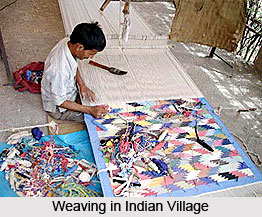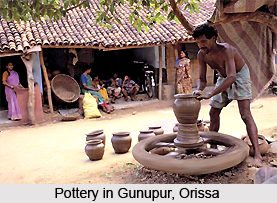People of Meghalaya are the life of the region that can broadly be divided into Garo, Khasi and Jaintia tribe. The three main tribes of Meghalaya are the Khasis, Jaintias and the Garos.
One of the unique features of all the Cities of Meghalaya is that a majority of the tribal population follows a matrilineal system where lineage and birthright are traced through women and children take mother title.
The tribal Indigenous crowd are among the earliest settlers in the Indian subcontinent. It is the youngest daughter who inherits the ancestral chattels and is the concierge of aged parents and spinster siblings. The tribal people of Meghalaya are the world`s largest continuous matrilineal culture.
As ancient culture of Meghalaya is in an ever widening and flowing motion through the populace portrays it is rich in folklore, dance and music. The musicians use handcrafted traditional instruments and the "Dharas" of the women dancer`s costumes are woven from native silk yam. Folk tales are still told around the fireplace and "Phawars", witty word games, are popular at social occasions. The people are close to nature and practice conservation through the prehistoric sacred forests and agricultural practices. A culture in transition is worth experiencing their culture in transition, with the people themselves whose hospitability & etiquette is par excellence.
Khasi Tribe is an ancient populace of the region. Khasi are an endogamous tribe who are divided into exogamous clans which are again subdivided into exogamous matrilocal families. The exogamous clans are Lyngoh, Kharkongor, Diengdoh, Sohkhler, Marbaniang and Syiemlich who trace their descent from respective female ancestress. Inter marriage between them is allowed. Inheritance of property takes place only through the female line. Khasi clans provide a good example of social organisation which is based on clans. Hypergamy is not practiced. There are no child marriages. Marriage has both a religious and a social aspect among the Khasi Tribe. Monogamy is the common form of marriage. Polygamy and polyandry are not known among them. As their society is matriarchal all the earning of males and females are owned jointly and administered by the head woman. Property is inherited from mother to daughter. Khasi family life is woven into religious rituals and ceremonies. In some cases it has seen that women act as religious and secular chiefs.
It is interesting to note a typical Khasi house. It is a shell-shaped building with three rooms: the Shynghup is a porch for storage; the Nengpei is the centre room for cooking and sitting; and the Rumpei is the inner room for sleeping. The homes of wealthy Khasi, on the other hand, follow the modern trends and have iron roofs, chimneys, glass windows, and doors. Some have European-style homes and furniture.
 Religion of Khasi Tribes
Religion of Khasi Tribes
As far as religion is considered the Khasis are monotheistic. They do, however, invoke God by various names according to the need of the moment, as God has all the attributes of goodness and all the power to do well. So they call him "`lei long spah". Besides adapting to the indigenous practices of the Khasi religion, these people are Presbyterians. Majority of the Khasi have adopted Christianity though they are rooted in their traditional religion too. Besides Hinduism, Islam and Jainism are also practiced respectively. A small number of them are Buddhists and Sikhs also.
Festivals of Khasi Tribes
Khasis celebrate many festivals with the help of ritualistic dance performances. Dance and music form an integral part of Khasi Life - every festival and ceremony the women use golden crown in the shape of a wide decorative band that rests on their head. Floral plumes are used to further ornament them. The `phawar` is one of the basic forms of Khasi music.
Khasi are trying to preserve their tribal identity. A solidarity movement has gained popularity among the Khasis, irrespective of their religious affiliation, which re-establishes their tribal identity. Educationally Khasis have become very cautious. With their unique cultural heritage, the Khasi tribe remains an integral part of Indian demography even today.
Garo Tribes
Garo Tribes have a matrilocal and matrilineal society is prevalent among the Garo tribes. Decent and inheritance are reckoned through the mother. The woman enjoys a higher status in the society. Community ownership of property prevails in the Garo society. The Garo tribe is sub divided into different linguistic and cultural groups such as Aure, Chisak, Matchi-Dual, Metabeng, Ateng, Chibok, Ruga, Gara-Ganching, Megham, Dussani and Cheani. Monogamy is the general rule though Polygamy is allowed. Traditionally women were excluded from the village administration. They were treated as equivalent to that of children. Here however freedom of women does not mean that they disregard their social code of conduct. They feel that women should maintain the tradition and dignity of the society they belong. Widow Remarriage is prevalent amongst them. Among the Garos the right of inheritance belongs to the female members of the family. The Garo society does not prefer inter-caste marriage. Youth dormitory is found among the Garos which is known as Nokpanthes. The dormitories are smaller than other houses of the village and open at one end. The musical instruments are the property of these houses.
Jhum cultivation is the main occupation of the Garo tribe during harvest. The economic life of the Garo tribes revolves around agriculture and farming. The hills in this region are suitable only for Jhum cultivation. Paddy, cotton, maize, millet and pulses are grown. One of the religious beliefs of Garo tribes has been that the destiny of man from birth to death is governed by a host of malevolent and benevolent spirits. There are a huge section of Garo populace who has followed Baptism and Roman Catholicism. These Garo tribes follow almost all the rituals associated with this religion. Few of these Garo tribes are `Seventh-day Adventists, Anglicans` and the rest belong to some of the newly formed `denominations`. Following the tradition of most of the tribes of the region, there are several of Garo tribes who still follow their conventional Animist-Hindu norms and customs. Their dances can be categorised into two groups-Santalo Chroka and Abani Kamrangko Mesokanirang. Garo people are very fond of music and dance. Among the various types of songs that are performed by the Garo people are Pandu Dolong, Serejing, Nangorere and few more. Moreover, Mi Sua, Napsepgrika, Kambe Toa, Gaewang Roa, Ajema Roa, Chambil Moa, Dokru Sua etc. are the different dance forms of the Garo tribes. The Garos use different types of musical instruments like Chordophone, Aerophone, Idiophones and Membranophone.
Garo society is in transition though the degree of transition is very low. Majority of the Garos prefer to live in a homogeneous society. The attitude of the Garo inclines towards traditional system. The Garo is still on the eve of stepping stone towards the development.






